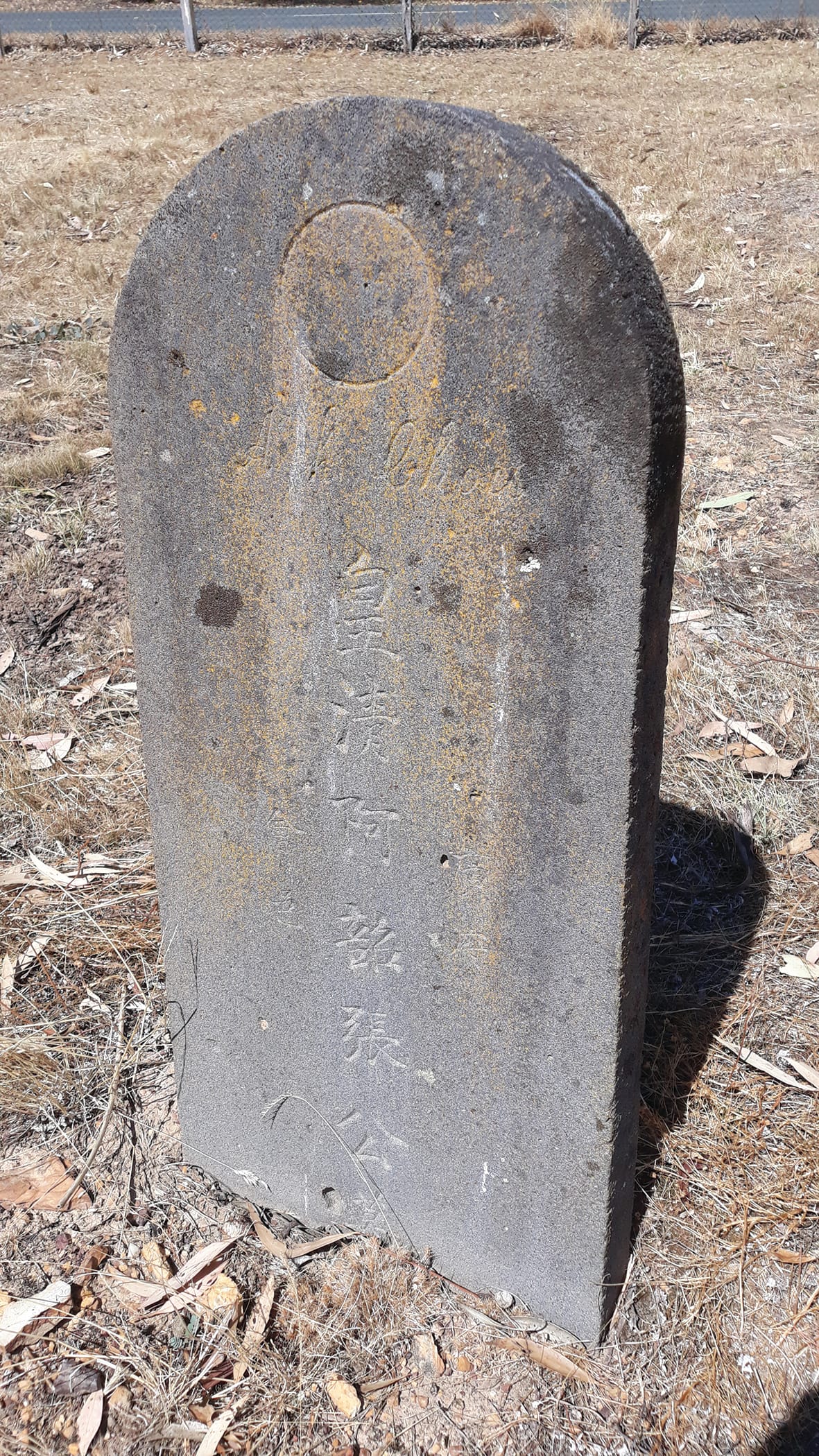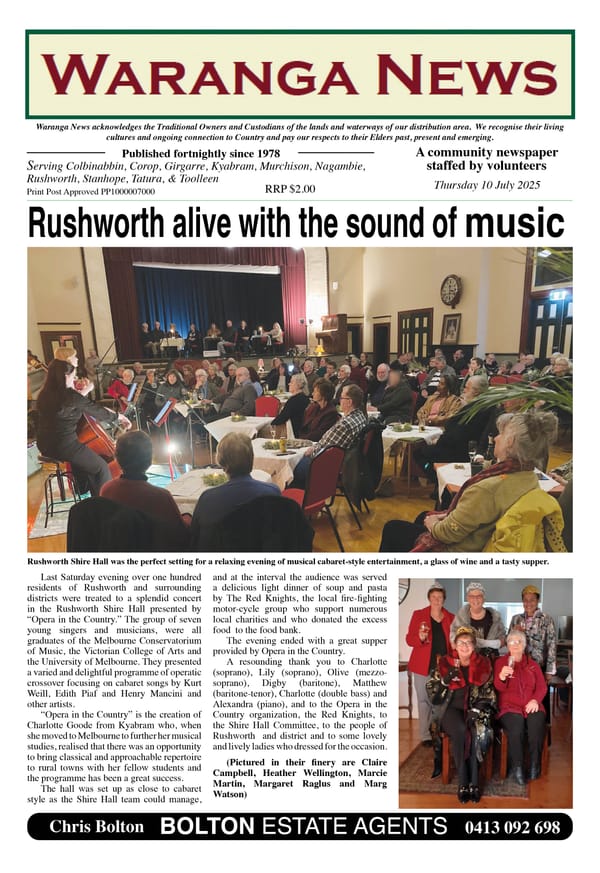26. Rushworth footstone

Many Chinese people were buried in local cemeteries in the latter part of the 19th century. Where there was a large Chinese population, in places such as Beechworth, White Hills, Bendigo and Castlemaine, the sections containing Chinese burials are extensive. There are a large number of footstones, and sometimes infrastructure such as a burning tower.

With a smaller Chinese population here, there is just one Chinese footstone in the Rushworth cemetery. It commemorates a man called Ah Chou (a name which has various other spellings). Back in 2009, Wim and Dorothy Rosenberg from Stanhope arranged for a translation of the Chinese characters on the headstone by a Chinese scholar, Dr Kok Hu Jin.1
When translating from Chinese characters to English, there are all sorts of complications. For example, one Chinese character can have more than one meaning in English. There are also multiple variations in the Chinese language. The official dialect today is Mandarin, but even now 30% of Chinese speak other dialects. One of these is Yue (or Cantonese). Most of the diggers who came to the Waranga area were from Guangdong province, often referred to in gold rush days as Canton. However, even within Cantonese there are local dialects which can render speakers of two dialects unintelligible to each other.
AH CHOU
The headstone reveals that, like so many of his compatriots in the Waranga area, Ah Chou came from the Guangdong (Canton) province in south-eastern China. The district that he came from is known as Xinhui, which is not far from Macao and Hong Kong. There is a strong chance that the port of Hong Kong was Ah Chou’s exit point when he left for Australia.
Unlike many European headstones in the cemetery, Ah Chou’s footstone does not mention dates. The Rushworth Cemetery Trust records also do not mention the date of burial, but a relative, “Thomas” Ah Chong was buried in the same grave in 1911.
Chinese people were rarely granted an obituary in the local papers. If so, it was usually only a couple of lines, even if the person had lived in the local community for decades. If an obituary did appear, it was usually not much more than a report on how the person died. Often, it did not even include a name.
Sadly, there was no obituary printed in local papers for Ah Chou, so we know little about his life. Some references suggest that he was a storekeeper at Whroo. There are other references to an Ah Chow (perhaps the same person) on the Whroo Cemetery Trust website and also in the Rushworth Chronicle, the latter stating that he was before the courts on occasions. The Chinese were required to have (and pay for) a residency ticket. If they could not produce a current ticket, they were in trouble with the law. This may have been the case with Ah Chou. There is no suggestion that Ah Chou was less than scrupulously honest in his regular business dealings.
There is an obituary for Ah Chou’s relative “Thomas” Ah Chong, which states that as a “very old identity of Moora (he) was a very quiet old man and was well respected. He leaves a widow and large family to mourn his death.” He had married Emma Branson in 1875. They had 8 children together and ran a market garden.
SECRET SOCIETY
At the top of Ah Chou’s headstone is a circle, which Dr Kok suggested was a symbol representing “a blazing sun and is used to decorate the distinguished member of the Hung League.”1 The Hung League was also referred to as the Heaven-Earth-League, which was a secret society known in Chinese as Thian Ti Hwui.
A researcher at the Golden Dragon Museum in Bendigo has cast some doubt on this interpretation and an internet search does not reveal the symbol as one of significance for the Heaven-Earth-League. However, this does not necessarily mean that Dr Kok’s interpretation is incorrect. Many Chinese who came to Australia were members of such societies, which have been likened in some quarters to Freemasonry, where ritual, secrecy and loyalty are regarded as important characteristics of members.
One of the main functions of the societies was to look after the members, who were often from the same clan and/or geographic region of China.
Sources: 1 Waranga News 22.10.2009 p 15; Other – Ancestry website




